Shintoism, deeply rooted in the cultural fabric of Japan, holds immense significance in Japanese mythology and society. This ancient indigenous religion, dating back thousands of years, is centered around the veneration of kami, divine beings that inhabit the natural world. Shinto rituals and shrines play a pivotal role in connecting believers with these spiritual entities. From creation myths to tales of deities and legends, Shintoism weaves its way through the intricate tapestry of Japanese folklore. It influences not only rituals and festivals but also permeates art, literature, and popular culture. Today, Shintoism continues to thrive in modern Japan, shaping national identity, preserving sacred traditions, and offering a profound understanding of the world and its mysteries. Join us as we unravel the significance of Shintoism and its enduring legacy in Japanese society.
Contents
- The Origins of Shintoism
- Shintoism’s Role in Japanese Mythology
- Shintoism and Japanese Culture
- The Continuity of Shintoism in Modern Japan
- Conclusion
-
Frequently Asked Questions
- 1. What does the term “kami” mean in Shintoism?
- 2. Is Shintoism exclusively practiced in Japan?
- 3. Are there specific rituals associated with Shintoism?
- 4. Does Shintoism have a creation myth?
- 5. How does Shintoism relate to Buddhism in Japan?
- 6. What role does Shintoism play in Japanese festivals?
- 7. How has Shintoism influenced Japanese art and literature?
- 8. Are Shinto rituals and practices still relevant in modern Japan?
- 9. How are Shinto shrines preserved and maintained?
- 10. Does Shintoism influence Japan’s national identity?
- References
-
Frequently Asked Questions
- 1. What is the significance of kami in Shintoism?
- 2. How are Shinto rituals and shrines important in the practice of Shintoism?
- 3. What are some of the creation myths in Shintoism?
- 4. How do deities and legends contribute to Shinto mythology?
- 5. What is the relationship between Shintoism and Buddhism in Japanese mythology?
- 6. How do Shinto festivals and celebrations contribute to Japanese culture?
- 7. In what ways does Shintoism influence art, literature, and popular culture in Japan?
- 8. How is Shintoism practiced in modern Japan?
- 9. Why is the preservation of Shinto shrines significant in Japan?
- 10. How does Shintoism contribute to Japan’s national identity?
- References
- Read More
The Origins of Shintoism
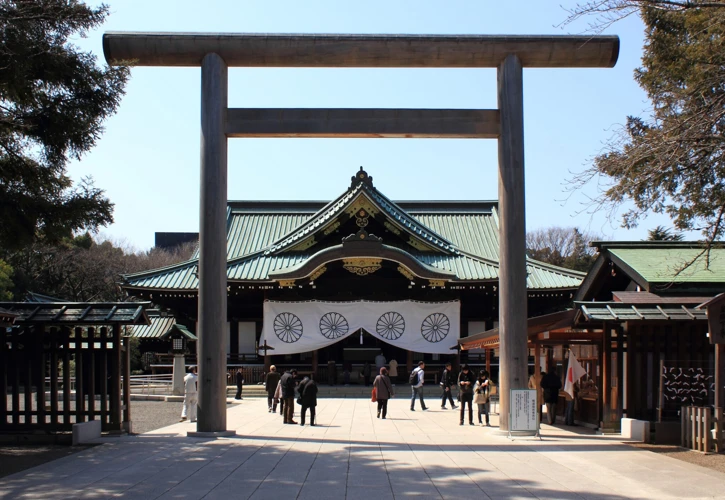
Shintoism, with its ancient roots in Japan, has evolved over centuries, blending native beliefs with external influences. Its origins can be traced back to the Jomon period (14,000 – 300 BCE), when the Japanese people had a deep reverence for nature and its spirits. Central to Shintoism are the kami, revered as divine beings that inhabit natural elements such as mountains, rivers, and trees. These kami were seen as guardians and protectors of specific areas and communities. Shinto rituals and practices emerged as a way to communicate with and appease these deities, seeking their guidance and blessings. Over time, Shintoism incorporated Taoist and Buddhist elements, particularly during the Nara period (710-794 CE) when Buddhism was introduced to Japan. Despite these influences, Shintoism retained its distinctive practices and worldview, fostering a harmonious relationship between humans and nature. Today, Shintoism remains deeply ingrained in Japanese society, embodying the unique cultural and spiritual heritage of the Japanese people.
1. Kami: The Divine Beings
Kami, the divine beings of Shintoism, are at the very heart of this ancient religion. They are considered the embodiment of sacred power and are revered as the spirits dwelling in various natural elements. These elements can range from majestic mountains like Mount Fuji, to tranquil bodies of water such as lakes and rivers, to even humble objects like stones and trees. The concept of kami extends beyond the physical realm, encompassing ancestral spirits, mythical creatures, and even certain concepts or ideas. Kami are not necessarily immortal or perfect beings, but rather entities that possess significant influence and power. They are believed to have the ability to bring blessings, protection, and guidance to those who pay them homage. This unique relationship between humans and kami forms the core of Shinto rituals and practices, as individuals seek to establish a connection with these revered beings. It is this profound reverence and interconnectedness with the natural and spiritual world that sets Shintoism apart and continues to define its significance in Japanese mythology and culture.
2. Shinto Rituals and Shrines
Shinto rituals and shrines form an integral part of Shintoism, providing believers with a vital connection to the divine. Rituals in Shintoism vary in scale and purpose, ranging from personal prayers and offerings to larger communal ceremonies. One common ritual is the purification ceremony, known as misogi, where individuals cleanse themselves to purify their bodies and spirits. This practice is often performed under waterfalls or in natural springs to symbolize the cleansing power of flowing water. Another significant ritual is the act of offering prayers and making donations at shrines. Shinto shrines, known as jinja, dot the Japanese landscape and are sacred spaces dedicated to specific kami. These shrines are often characterized by their torii gates, marking the transition from the human world to the divine realm. Worshipers approach the shrine, offer a coin, bow, clap their hands, and offer their prayers. Shrines also host seasonal festivals, known as matsuri, where communities come together to celebrate and honor the local kami. These vibrant festivals feature processions, music, dancing, and other traditional performances. The most well-known shrine in Japan is the Itsukushima Shrine in Miyajima, known for its iconic floating Torii gate. This shrine attracts visitors from all over the world, creating a spiritual and awe-inspiring experience. Shinto rituals and shrines serve as spiritual waypoints, bridging the gap between humans and the divine, and fostering a sense of communal harmony and reverence for nature.
Shintoism’s Role in Japanese Mythology
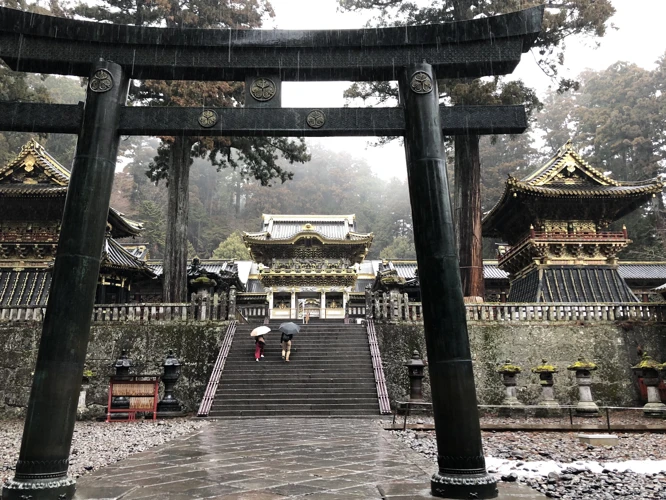
Shintoism plays a central role in Japanese mythology, shaping the rich tapestry of ancient tales and legends that have been passed down through generations. Within the realm of Japanese folklore, Shintoism introduces various creation myths that explain the origins of the world and the unique relationship between humans and the divine. One prominent myth is the story of Izanagi and Izanami, the divine couple who, through their union, gave birth to the islands of Japan and numerous deities. These myths provide a foundation for understanding the natural elements and phenomena revered in Shintoism. The concept of kami, the divine beings, features prominently in these myths, as they are often portrayed as key characters who bring about significant events and transformations. Shinto mythology also includes legends of heroes and supernatural beings with extraordinary abilities, such as the story of Susanoo, the storm god who battles the dragon Yamata no Orochi to save Princess Kushinada. Additionally, the intertwining of Shintoism with Buddhism resulted in the assimilation of Buddhist figures and stories, further enriching Japanese mythology. This fusion can be seen in the legend of Hachiman, a deity believed to be a harmonious blend of Shinto and Buddhist beliefs. The role of Shintoism in Japanese mythology is thus integral to understanding the cultural identity and spiritual beliefs of the Japanese people throughout history.
1. Creation Myths
Creation myths hold a central place in Shintoism, offering insights into the origins of the world and the Japanese people. One of the most prominent creation myths is the story of Izanagi and Izanami, the divine couple credited with the birth of the Japanese archipelago and the progenitors of numerous deities. According to the myth, Izanagi and Izanami stirred the primordial ocean with a jeweled spear, and as they lifted it, the droplets that fell back into the water formed the first landmass, known as Onogoro Island. The couple then descended from the heavens and performed a marriage ritual, circling the central pillar of the heavenly bridge. However, tragedy struck when Izanami spoke first during the ceremony, resulting in the birth of deformed and monstrous beings. Undeterred, they repeated the ritual correctly and gave birth to various islands, mountains, and rivers, as well as gods and goddesses who shaped the world. Another prominent creation myth is the tale of Amaterasu, the goddess of the sun, who emerged from a cave, bringing light back to the world after her brother, Susanoo, had caused havoc and darkness. These creation myths not only explain the origins of the physical world but also illuminate the interconnectedness between nature, humanity, and the divine in Shinto tradition.
2. Deities and Legends
The rich tapestry of Shintoism is adorned with an array of deities and legends that continue to captivate and inspire. One prominent deity in Shinto mythology is Amaterasu, the goddess of the sun and the ancestral deity of the imperial family. She is revered as a symbol of light, warmth, and the source of life itself. Another revered figure is Susanoo, the storm god known for his wild and unpredictable nature. His tales often involve battles with monstrous creatures and his eventual reconciliation with his sister, Amaterasu. Other notable deities include Inari, the god/goddess of rice and fertility, and Hachiman, the god of war and protection. Legends in Shintoism are woven with stories of divine interventions, epic battles, and transformative journeys. One such legend is the tale of Izanagi and Izanami, the divine couple who created the Japanese islands and the gods themselves. Their union resulted in the birth of numerous deities, shaping the course of Japanese history and culture. These captivating deities and legends serve as a testament to the enduring allure of Shintoism and its influence on the beliefs and imagination of the Japanese people.
3. Relationship with Buddhism
The relationship between Shintoism and Buddhism has been complex and intertwined throughout Japanese history. Buddhism first arrived in Japan in the 6th century CE, bringing with it new philosophical and religious ideas from India. Initially, Shinto and Buddhism coexisted as separate belief systems, with Buddhism primarily appealing to the educated elite. However, over time, a syncretic approach developed, blending elements from both religions. This syncretism led to the emergence of a unique Japanese form of Buddhism, known as Shinto-Buddhism or Shinbutsu Shugo. In this amalgamation, Shinto deities (kami) were often identified with Buddhist bodhisattvas or gods, allowing believers to worship them interchangeably. Many Buddhist temples also incorporated Shinto shrines, reflecting the harmonious coexistence of the two religions.
One famous example of this syncretic relationship can be seen at the Ise Grand Shrine, one of the most sacred Shinto sites in Japan. The shrine is dedicated to Amaterasu, the sun goddess and a revered kami in Shintoism. However, within the shrine complex, there is also a Buddhist temple called Jinguji, which houses statues of Buddhist deities alongside the kami. This integration of Shinto and Buddhism demonstrates the fluid nature of religious practices in Japan.
While Shintoism and Buddhism have influenced and borrowed from each other, they also maintain distinct identities. Shintoism focuses on the worship of kami and the reverence of nature, while Buddhism emphasizes the pursuit of enlightenment and the elimination of suffering. Despite their differences, the two religions continue to coexist peacefully in Japan, with many Japanese people following both belief systems simultaneously.
The relationship between Shintoism and Buddhism in Japan is a fascinating blend of syncretism and mutual influence. This unique interplay has shaped Japan’s religious and cultural landscape and is a testament to the adaptability and openness of the Japanese people to different religious ideas and practices.
Shintoism and Japanese Culture
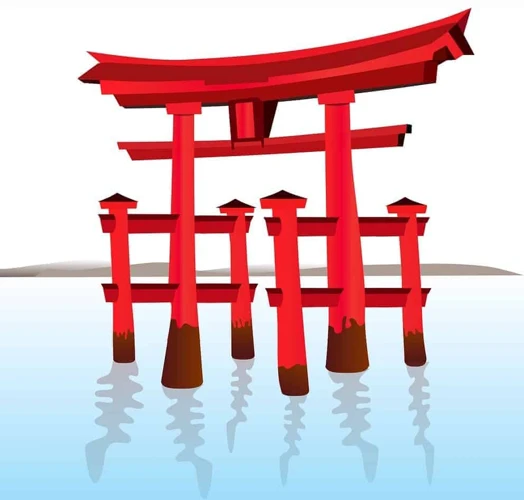
Shintoism’s influence on Japanese culture is profound and can be observed in various aspects of everyday life. Festivals and celebrations, deeply rooted in Shinto traditions, are a vibrant part of Japanese culture. Matsuri, or traditional festivals, are held throughout the year to honor kami and seek their blessings. These festivals involve colorful processions, performances, and rituals that showcase the rich tapestry of Shinto beliefs and practices. Additionally, Shintoism has had a significant impact on art, literature, and pop culture in Japan. Traditional Japanese art often features motifs inspired by Shinto themes, such as depictions of kami or scenes from mythology. Notable works of literature, like “The Tale of Genji” by Murasaki Shikibu, incorporate Shinto elements, reflecting the deep connection between spirituality and storytelling. In modern times, Shintoism’s influence can be seen in popular culture, with manga, anime, and video games often drawing inspiration from Shinto mythology and incorporating its symbols and themes. This fusion of traditional beliefs with contemporary cultural expressions serves as a testament to the enduring role of Shintoism in shaping the collective identity and creative expressions of the Japanese people.
1. Festivals and Celebrations
Festivals and celebrations hold a prominent place in the practice of Shintoism, providing opportunities for individuals and communities to come together in worship and gratitude. These events offer a tangible connection to the spiritual realm and serve as occasions to honor the kami. One such festival is the famous “Matsuri,” which is celebrated nationwide in various forms. The Matsuri often involves vibrant processions, traditional music and dance, and elaborate rituals performed at Shinto shrines. These festivals are not only religious in nature but also act as platforms for cultural expression and social cohesion. The celebration of seasonal changes, such as the cherry blossom festival (Sakura Matsuri) in spring or the autumn harvest festival (Niiname-sai), exemplifies the close relationship between Shintoism and the natural world. Festivals like the Gion Matsuri in Kyoto or the Kanda Matsuri in Tokyo showcase the rich tapestry of Japanese tradition and allow participants to immerse themselves in the spiritual energy of the kami. These lively celebrations continue to be cherished by the Japanese people, fostering a sense of community and deepening their connection to Shinto beliefs.
2. Influence on Art, Literature, and Pop Culture
The influence of Shintoism on art, literature, and pop culture in Japan is profound and far-reaching. From ancient times to the present day, Shinto beliefs, rituals, and motifs have been intricately woven into various forms of artistic expression.
In traditional Japanese art, such as painting, calligraphy, and woodblock prints, scenes depicting sacred Shinto shrines, kami, and natural landscapes are commonly depicted. These artworks capture the beauty of the natural world and evoke a sense of spiritual connection and harmony. For example, the famous artist Katsushika Hokusai’s “Thirty-Six Views of Mount Fuji” series prominently features the iconic mountain, which holds deep spiritual significance in Shintoism.
Literature in Japan has also been heavily influenced by Shintoism. Many classic works of Japanese literature, such as “The Tales of Genji” by Murasaki Shikibu, incorporate Shinto themes and references. Shinto beliefs are often intertwined with the portrayal of characters, their actions, and the overall narrative. The emphasis on nature, purity, and the spiritual essence of the natural world in Japanese literature can be traced back to the foundational principles of Shintoism.
Shintoism’s influence on pop culture in Japan is evident in various forms of media, including anime, manga, and video games. Numerous anime series and manga feature stories that revolve around kami, mythical creatures, and Shinto rituals. For example, the popular Studio Ghibli film “Princess Mononoke” delves into the delicate balance between humans and the spirits of the forest, reflecting Shinto beliefs regarding the sanctity of nature.
The influence of Shintoism on art, literature, and pop culture in Japan highlights the deep-rooted connection between the spiritual realm and the creative expressions of the Japanese people. It serves as a testament to the enduring significance of Shintoism in shaping and inspiring various forms of artistic and cultural expression throughout Japanese history.
The Continuity of Shintoism in Modern Japan
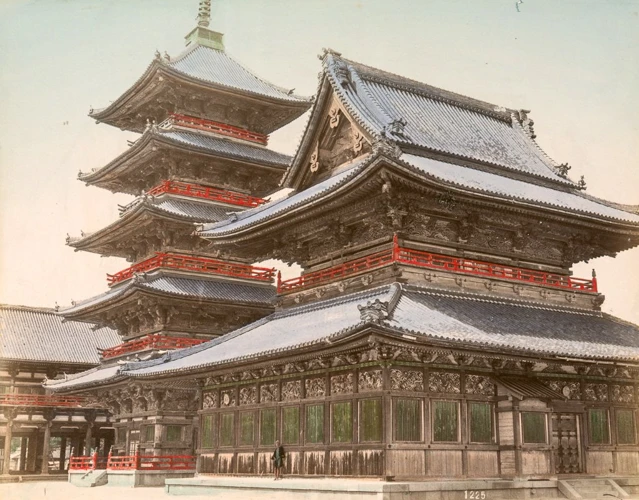
The continuity of Shintoism in modern Japan is evident in various aspects of Japanese society and culture. Shinto practices and beliefs continue to play a significant role in the lives of many Japanese people, both in rural and urban areas. Today, there are numerous Shinto shrines scattered across the country, serving as centers of religious and community activities. These shrines are places of worship, where individuals and families visit to pay their respects to the kami and seek their blessings. Shinto rituals and ceremonies are still practiced on important occasions such as weddings, births, and New Year celebrations, reflecting the enduring influence of this ancient religion. The preservation of Shinto shrines is paramount in maintaining the connection to Japan’s cultural heritage. Organizations actively work to protect and maintain these sacred sites, ensuring that they remain accessible to worshippers and visitors alike. As a result, Shintoism continues to thrive and evolve, adapting to the changing needs and beliefs of modern Japanese society. Its role in shaping national identity is evident in the integration of Shinto elements in various aspects, including the imperial family and official ceremonies. The continuity of Shintoism in modern Japan speaks to the deep-rooted cultural significance and spiritual resilience of this ancient religion.
1. Shinto Practices Today
Shinto practices today encompass a wide range of rituals and observances that are deeply embedded in the daily lives of the Japanese people. One important aspect is the act of purification or misogi, which involves cleansing the body and mind to attain spiritual purity. This can be done through rituals such as standing under a waterfall or bathing in natural springs, symbolizing the removal of impurities. Another common practice is the offering of prayers and wishes at Shinto shrines. Visitors often purchase omamori, protective amulets, and write their wishes on ema, wooden plaques, which are then hung at the shrine. Shinto ceremonies are conducted for various occasions, including New Year celebrations, weddings, and harvest festivals. Additionally, matsuri, or traditional festivals, are an integral part of Shinto practices, involving processions, performances, and communal feasts. These events serve to honor the kami and bring communities together in celebration. Despite modernization and the influence of other religious practices, Shintoism remains deeply rooted in the lives of the Japanese people, providing a spiritual connection to their ancestors and the natural world around them.
2. Preservation of Shinto Shrines
Preservation of Shinto shrines holds great importance in maintaining the integrity and continuity of Shintoism in Japan. These shrines, known as jinja, are considered sacred spaces where the kami reside and where believers can connect with the divine. The preservation of these shrines is a collective effort that involves the local community, government agencies, and religious organizations. The physical structures of the shrines, often characterized by their distinct architectural style with a unique combination of wood, stone, and thatch, require regular maintenance and restoration. Skilled craftsmen and artisans are responsible for preserving the traditional construction techniques and ensuring the longevity of these sacred sites. Additionally, the natural surroundings of the shrines, such as sacred forests and gardens, are meticulously maintained to preserve the serenity and spiritual ambiance. Many Shinto shrines are designated as national treasures or important cultural properties, highlighting their cultural significance to the nation. Through ongoing efforts in preservation, Shinto shrines continue to serve as vital cultural and religious landmarks, attracting numerous visitors who seek spiritual solace and a connection with Japan’s rich heritage.
3. Shinto’s Role in National Identity
Shintoism has played a significant role in shaping the national identity of Japan. The seamless integration of Shinto beliefs, rituals, and customs into various aspects of Japanese society has contributed to a sense of unity and common heritage among the Japanese people. Shinto practices are deeply intertwined with the country’s history and cultural traditions, making it an integral part of Japanese identity. The reverence for kami, the divine spirits of Shintoism, extends beyond the realm of spirituality and influences various aspects of daily life, from festivals and ceremonies to architecture and art. The imperial family, considered as descendants of the sun goddess Amaterasu, has maintained a close association with Shinto rituals, further strengthening the ties between Shintoism and national identity. The preservation and maintenance of Shinto shrines, many of which are designated as national treasures or important cultural properties, reflect the importance placed on the preservation of Japan’s cultural heritage. Shintoism’s role in national identity is not limited to the past; it continues to shape the perceptions and values of modern-day Japan, emphasizing a deep respect for tradition, nature, and the collective consciousness of the Japanese people.
Conclusion
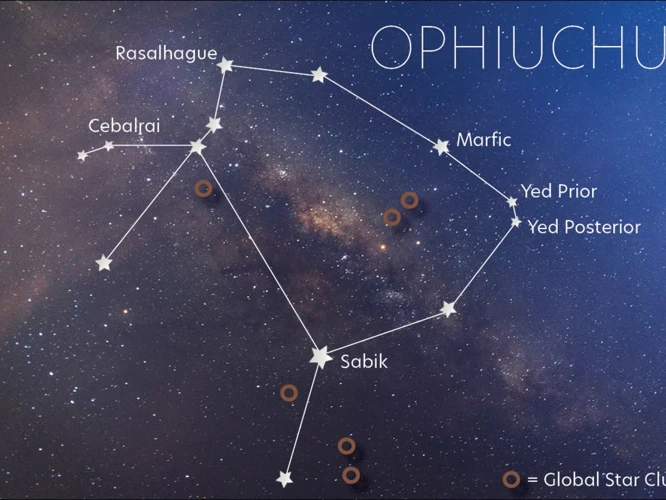
In conclusion, Shintoism holds immense significance in Japanese mythology, culture, and society. Its origins in the deep reverence for nature and the kami have shaped the spiritual landscape of Japan for thousands of years. The rituals and practices associated with Shintoism serve as a means to connect with the divine and maintain harmony with the natural world. This indigenous religion has been intertwined with Japanese folklore and mythology, giving rise to creation myths, tales of deities and legends, and a unique relationship with Buddhism. Shintoism’s influence extends beyond religious practices, permeating Japanese culture through vibrant festivals, profound artistic expressions, and its enduring presence in modern society. With its emphasis on reverence for nature and preservation of traditions, Shintoism continues to thrive in contemporary Japan, playing a vital role in shaping national identity and serving as a gateway to the mysteries of the divine. The importance of Shintoism in Japanese society cannot be understated, as it offers a profound understanding of the world and the interconnectedness of all beings.
Frequently Asked Questions

1. What does the term “kami” mean in Shintoism?
In Shintoism, “kami” refers to the divine beings or spirits that are believed to inhabit natural elements, such as mountains, rivers, and trees. They are venerated and considered as guardians and protectors.
2. Is Shintoism exclusively practiced in Japan?
Yes, Shintoism is primarily practiced in Japan. It originated in Japan and is deeply ingrained in Japanese culture, society, and mythology.
3. Are there specific rituals associated with Shintoism?
Yes, Shintoism involves various rituals and ceremonies. Some common rituals include purification with water, offering prayers and offerings at shrines, and participating in festivals and processions.
4. Does Shintoism have a creation myth?
Yes, Shintoism has several creation myths. One of the most well-known myths is the story of Izanagi and Izanami, who gave birth to Japan’s many islands and its deities.
5. How does Shintoism relate to Buddhism in Japan?
Shintoism and Buddhism coexist in Japan and have influenced each other throughout history. The two religions often blend together, and it is common to see Shinto shrines and Buddhist temples in close proximity.
6. What role does Shintoism play in Japanese festivals?
Shintoism plays a significant role in Japanese festivals, known as “matsuri.” These festivals are filled with lively processions, music, dance, and offerings to the kami. They serve as a way to express gratitude and seek blessings.
7. How has Shintoism influenced Japanese art and literature?
Shintoism has had a profound impact on Japanese art and literature. Artistic representations often depict kami, nature, and mythical creatures. In literature, Shinto themes and symbolism are woven into poems, novels, and plays.
8. Are Shinto rituals and practices still relevant in modern Japan?
Yes, Shinto rituals and practices continue to be relevant in modern Japan. Many Japanese people still visit shrines to pray and participate in traditional ceremonies and festivals.
9. How are Shinto shrines preserved and maintained?
Shinto shrines are carefully preserved and maintained by designated priests and shrine associations. Restoration projects are undertaken regularly to ensure the integrity of these sacred sites.
10. Does Shintoism influence Japan’s national identity?
Yes, Shintoism plays a significant role in shaping Japan’s national identity. The reverence for kami, the connection to nature, and the preservation of traditional rituals contribute to a sense of pride and cultural identity among the Japanese people.
References
Frequently Asked Questions

1. What is the significance of kami in Shintoism?
The kami are divine beings in Shintoism that represent natural forces, ancestors, and spirits. They play a vital role in Japanese mythology as they are believed to reside in sacred places, objects, and even individuals.
2. How are Shinto rituals and shrines important in the practice of Shintoism?
Shinto rituals and shrines are essential elements of Shintoism as they provide a space for believers to connect with the kami and offer prayers and offerings. They help foster a sense of community and maintain a strong spiritual bond with the divine.
3. What are some of the creation myths in Shintoism?
Shintoism has various creation myths, including the story of Izanagi and Izanami, who are believed to have created the Japanese islands and gave birth to numerous gods and goddesses. These myths explain the origins of the world and the divine lineage of Japan.
4. How do deities and legends contribute to Shinto mythology?
Deities and legends are integral to Shinto mythology as they shape the beliefs, values, and cultural identity of the Japanese people. These stories often feature heroic tales, moral lessons, and provide explanations for natural phenomena.
5. What is the relationship between Shintoism and Buddhism in Japanese mythology?
Shintoism and Buddhism coexist in Japan and have influenced each other throughout history. In Japanese mythology, many deities are shared between the two religions, and there are syncretic practices that blend elements of both belief systems.
6. How do Shinto festivals and celebrations contribute to Japanese culture?
Shinto festivals and celebrations hold great cultural significance in Japan. They not only provide an opportunity for communities to come together and express gratitude but also showcase traditional music, dances, and costumes, preserving and passing on the rich cultural heritage.
7. In what ways does Shintoism influence art, literature, and popular culture in Japan?
Shintoism has had a profound impact on Japanese art, literature, and popular culture. It has inspired numerous artistic expressions, such as paintings, sculptures, and architectural designs. Shinto themes and motifs can also be found in literary works, anime, and video games.
8. How is Shintoism practiced in modern Japan?
Shintoism is still actively practiced in modern Japan. Many individuals participate in rituals, visit shrines, and engage in personal worship, seeking blessings, purification, and guidance from the kami. Shinto priests also conduct ceremonies for important life events like weddings and funerals.
9. Why is the preservation of Shinto shrines significant in Japan?
The preservation of Shinto shrines is crucial for maintaining cultural and historical heritage. These shrines serve as physical representations of Japan’s spiritual and mythological beliefs, and their preservation ensures the continuation of traditions and a connection to the country’s past.
10. How does Shintoism contribute to Japan’s national identity?
Shintoism plays a key role in shaping Japan’s national identity. It is deeply ingrained in the culture, customs, and traditions of the Japanese people. The reverence for nature, respect for ancestors, and the belief in collective harmony are all influenced by Shintoism and contribute to the unique identity of Japan.
References
- What is the Shinto religion, and how does it relate …
- Japanese Shinto Mythology | Japaniverse Travel Guide
- 5 Ways Shinto Religion Manifests In Japanese Culture







